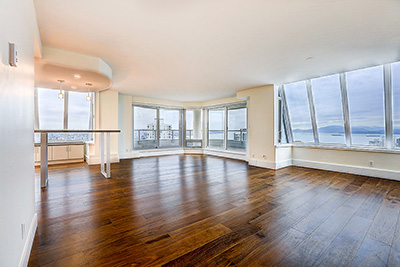
So, you’re renovating your home and you’re excited to install hardwood floor. You head to the local flooring supply and you discover that there are more options than you realized, and now you’re trying to decide whether to choose solid or engineered hardwood floor. What’s the difference between these options, and what are the pros and cons of each? Of course, installing new flooring can be expensive regardless of the materials you choose, so you also want to be sure to make the right decision for you and your home. Let’s discuss some of the benefits and drawbacks of solid and engineered hardwood flooring so you can make an informed choice.
We’ll start with solid hardwood. What is it? Essentially, solid hardwood flooring is made from one piece of solid wood (from the top to bottom surface of the strip of wood). Solid hardwood flooring is typically available in a range of thicknesses from ¾” to 5/16”. Solid hardwood flooring can usually be used on or above grade and makes a great choice for high traffic areas such as family rooms, dining rooms, bedrooms, and kitchens. However, seasonal temperature and humidity changes can have adverse effects on solid hardwood floors. Extreme changes in relative humidity can cause solid hardwood floors to expand and contract causing cracks between floor boards. Similarly, excessive moisture can be damaging to solid hardwood floors, so experts generally recommend choosing the hardest materials available (e.g. oak and ash) for areas such as the kitchen or bathroom.
Alternatively, engineered hardwood floors are constructed by layering real wood with veneers. In other words, engineered hardwood floors feature stacked layers of wood where the grain of each layer runs perpendicularly in order to promote durability and stability. This means engineered hardwood floors are more resilient to humidity, temperature, and moisture changes. Additionally, engineered hardwood flooring can be installed over a subfloor or concrete which means they are suitable for basements. Like solid hardwood, engineered floors can be installed on or above grade, but also below grade. Though they cannot be sanded or finished like solid hardwood, they are also less likely to crack or dent due to changes in humidity, temperature, or moisture. Solid hardwood floors are certainly easier to refinish when cracks and dents appear, but engineered hardwood can usually easily be maintained by replacing damaged strips as necessary.
When choosing between solid and engineered hardwood, it is always advisable to consult with an expert. Some of the factors you need to consider are durability and maintenance requirements for the materials you choose, and of course your budget. There are so many beautiful flooring options for both solid and engineered hardwood floors that you’re sure to find the ideal material for your home.
